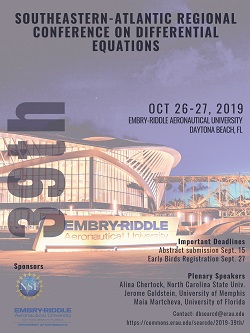Institution
Embry-Riddle Aeronautical University
Abstract
The Discrete Fourier Transform (DFT) has a plethora of applications in applied mathematics and electrical engineering. Discrete Cosine Transform (DCT) is a real-arithmetic analogue of DFT. DCTs with orthogonal trigonometric transforms have been especially popular in recent decades due to their applications in digital video technology and high efficiency video coding. One can say that DCT is the key transform in image processing, signal processing, finger print enhancement, quick response code (QR code), multi-mode interface, etc.
In this talk, we first introduce sparse and scaled orthogonal factorization for the DCT and inverse DCT. Afterwards, we present fast split-radix and radix-4 DCT and inverse DCT algorithms. We show that the proposed algorithms attain the lowest theoretical multiplication complexity and arithmetic complexity for 8-point DCT II/III matrices. We perform execution time of the proposed algorithms while verifying the connection to the order of the arithmetic complexity. Finally, the language of signal flow graph representation of digital structures is used to describe potential for real-world circuit implementation.
Fast Split-Radix and Radix-4 Discrete Cosine Transform Algorithms
The Discrete Fourier Transform (DFT) has a plethora of applications in applied mathematics and electrical engineering. Discrete Cosine Transform (DCT) is a real-arithmetic analogue of DFT. DCTs with orthogonal trigonometric transforms have been especially popular in recent decades due to their applications in digital video technology and high efficiency video coding. One can say that DCT is the key transform in image processing, signal processing, finger print enhancement, quick response code (QR code), multi-mode interface, etc.
In this talk, we first introduce sparse and scaled orthogonal factorization for the DCT and inverse DCT. Afterwards, we present fast split-radix and radix-4 DCT and inverse DCT algorithms. We show that the proposed algorithms attain the lowest theoretical multiplication complexity and arithmetic complexity for 8-point DCT II/III matrices. We perform execution time of the proposed algorithms while verifying the connection to the order of the arithmetic complexity. Finally, the language of signal flow graph representation of digital structures is used to describe potential for real-world circuit implementation.


Comments
View Parallel Session